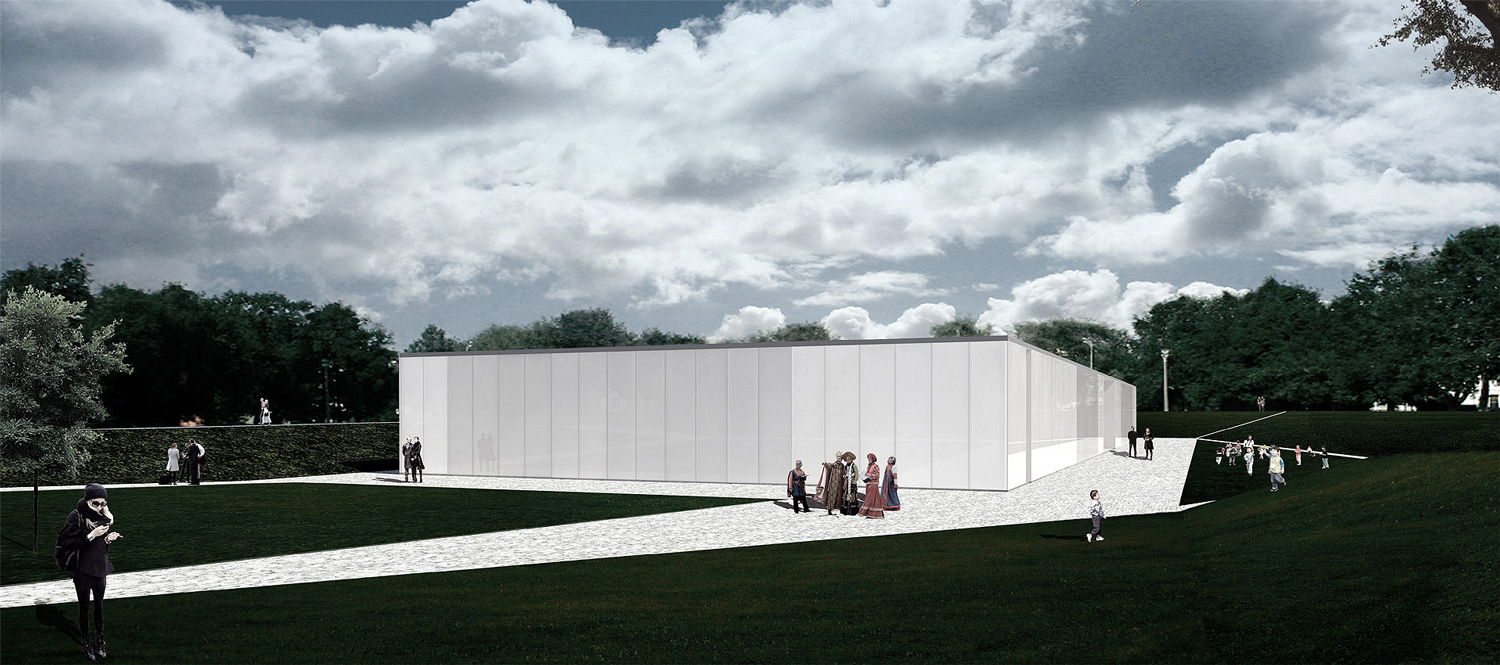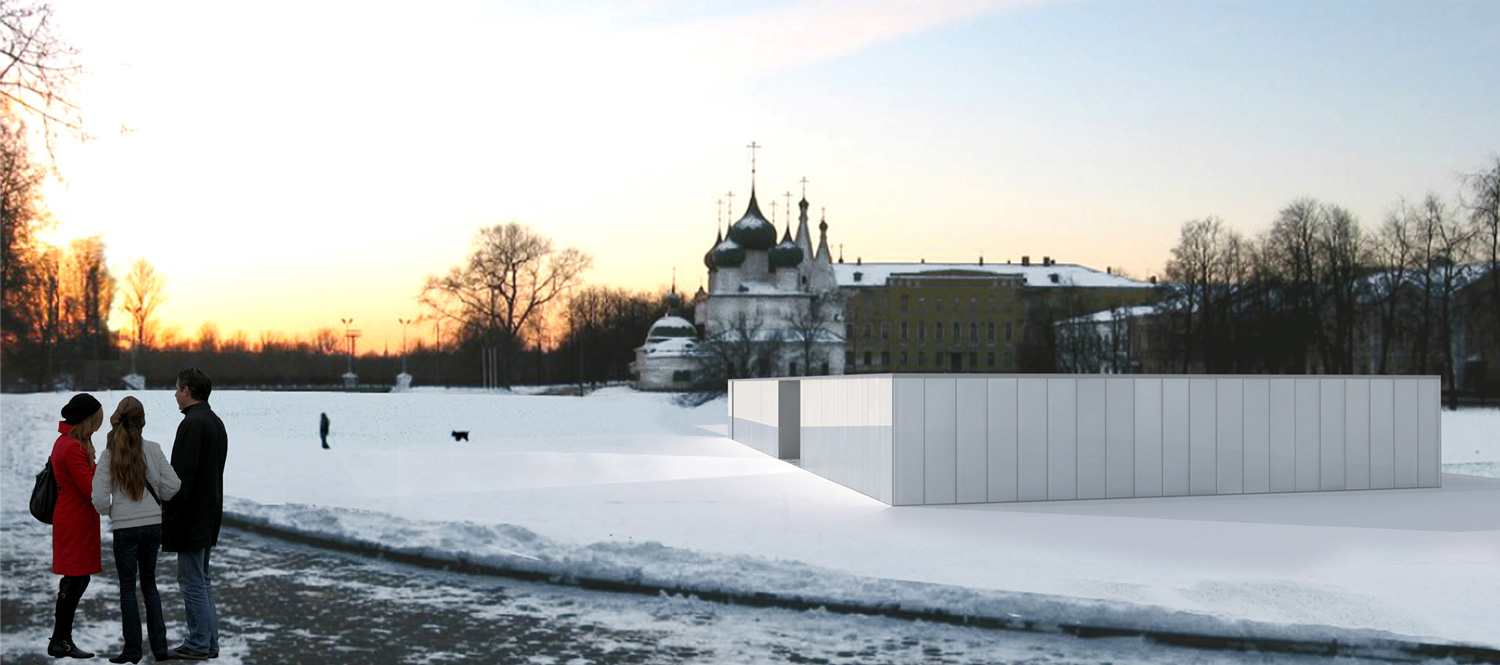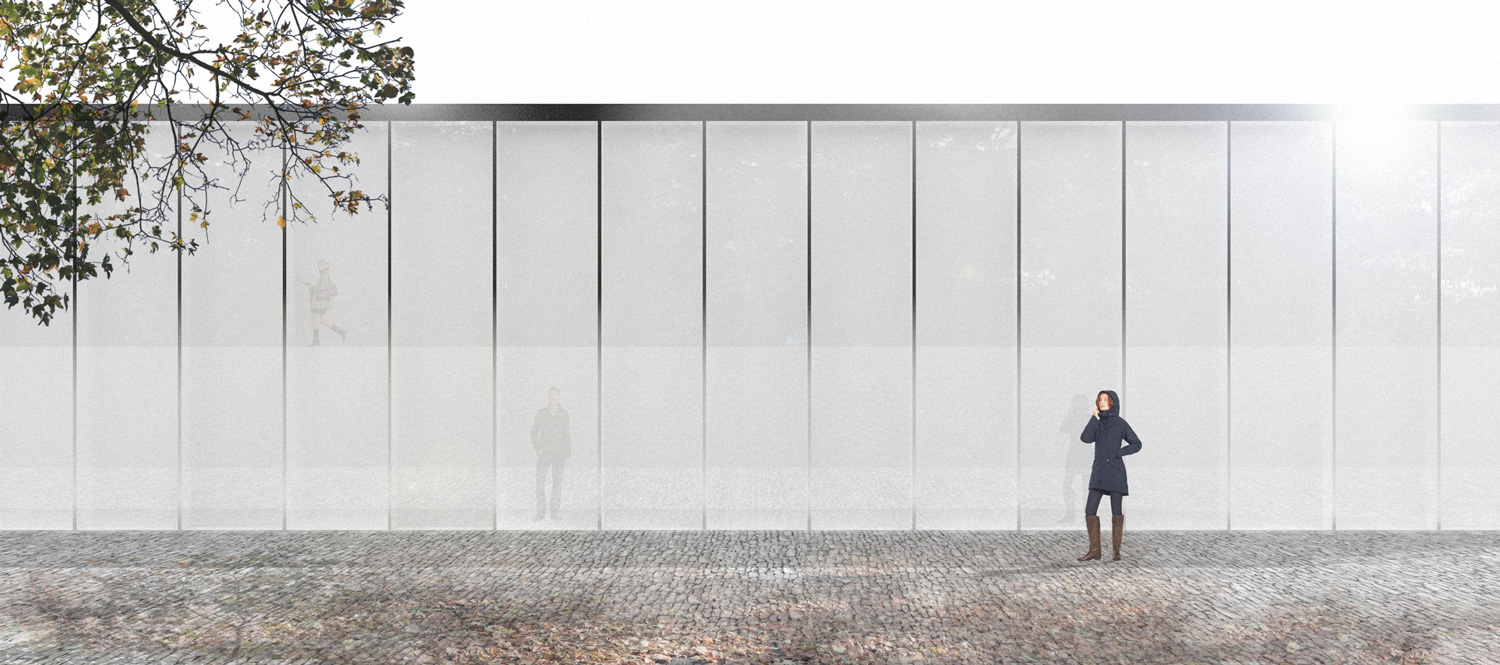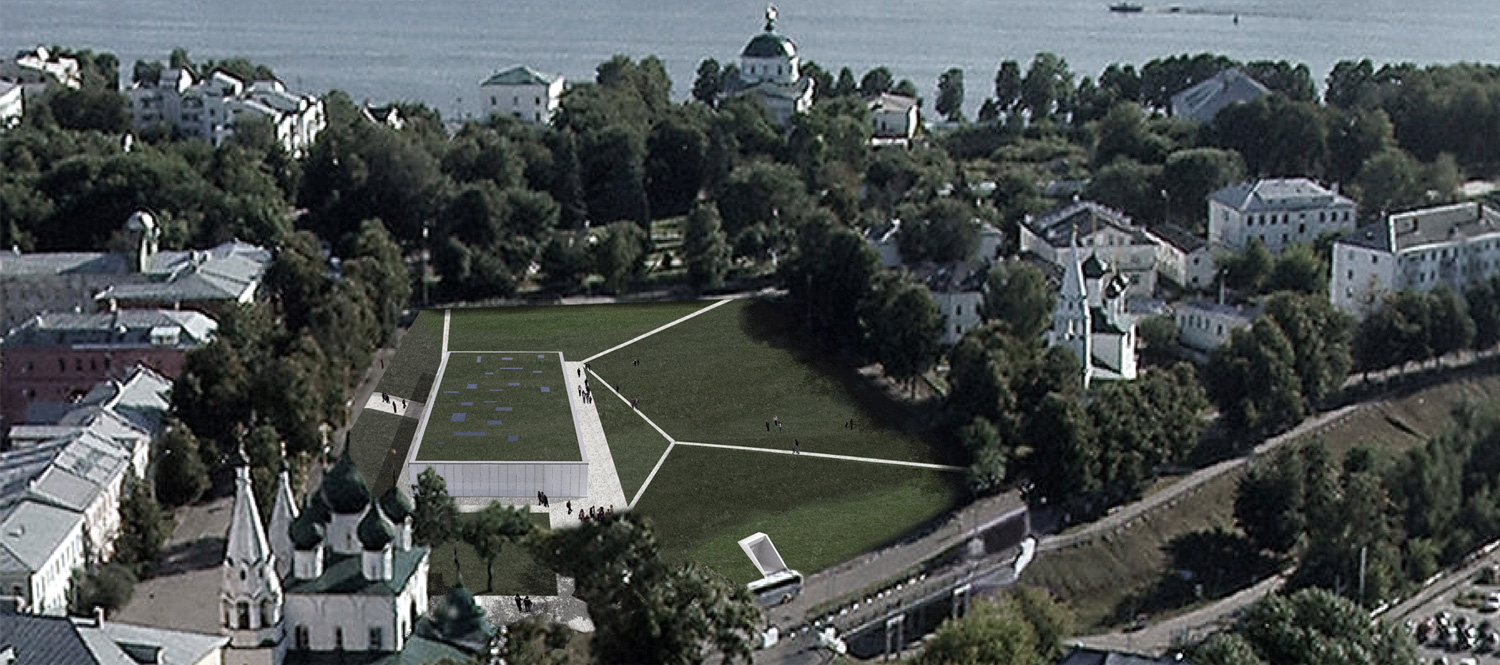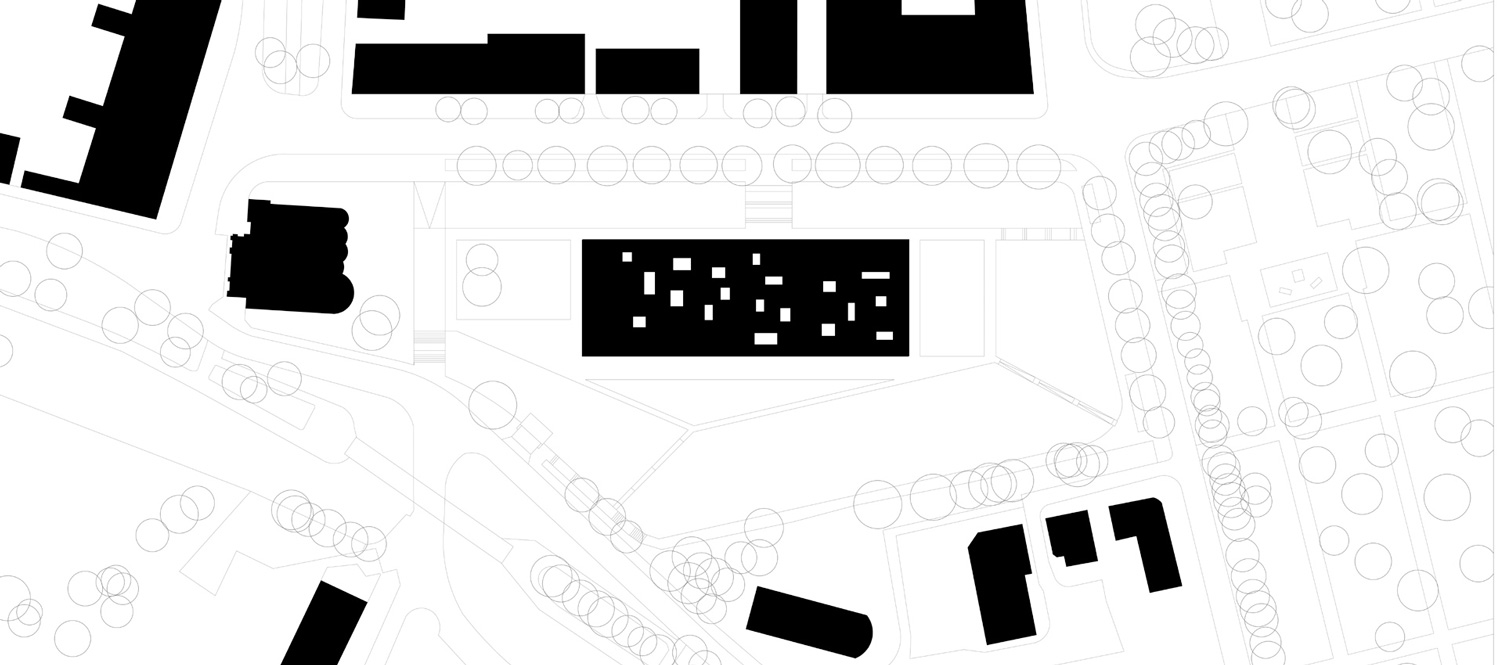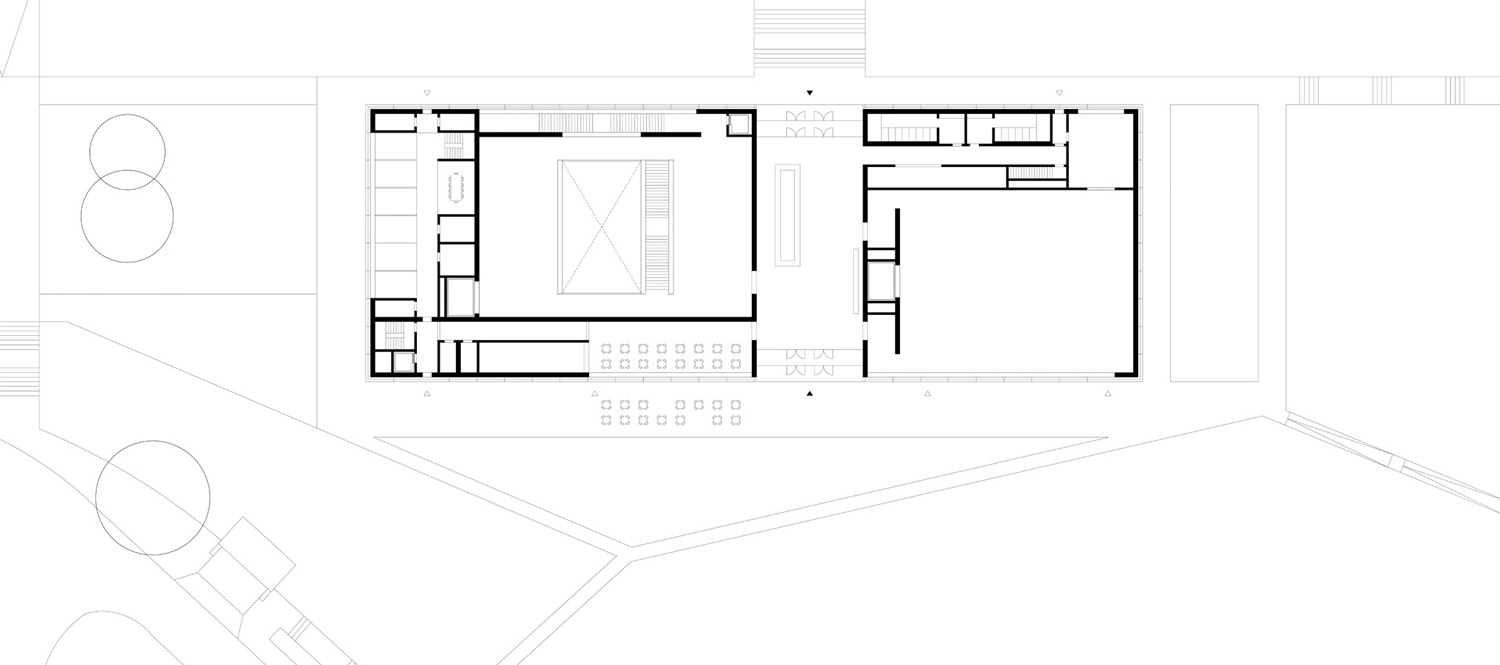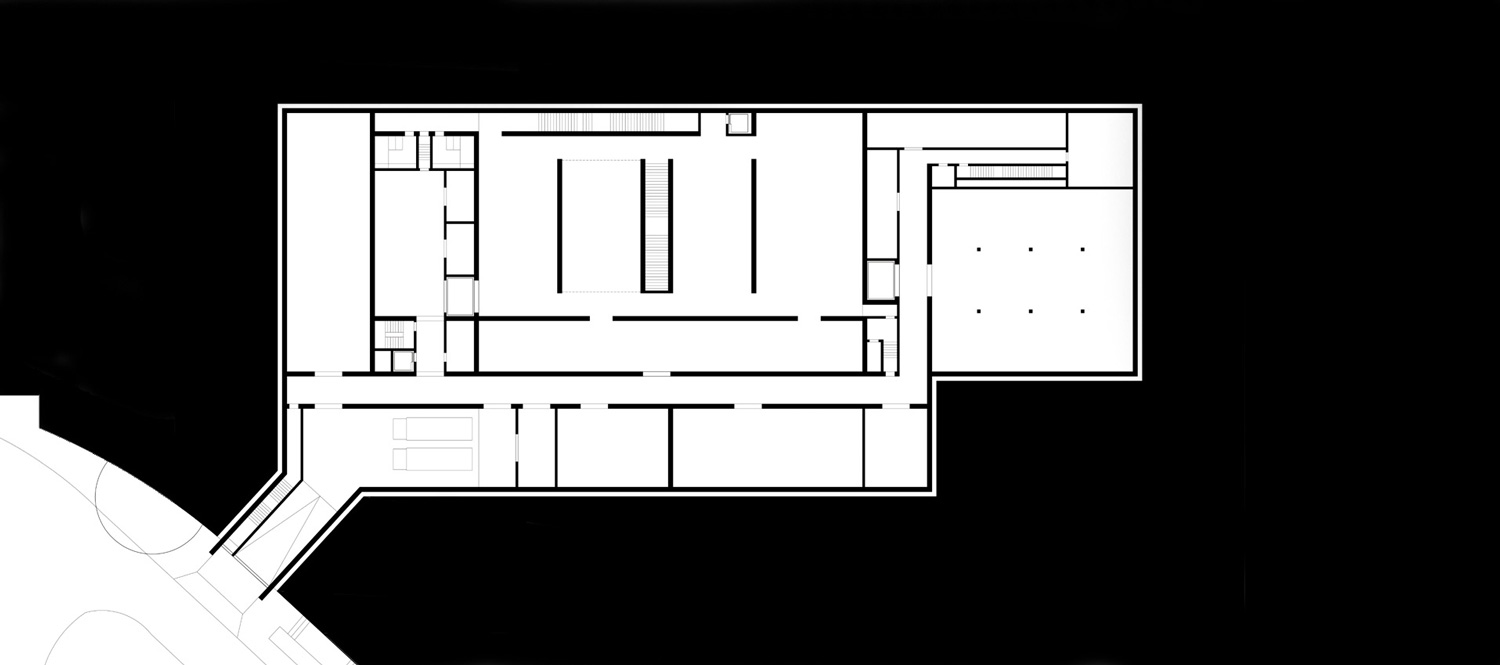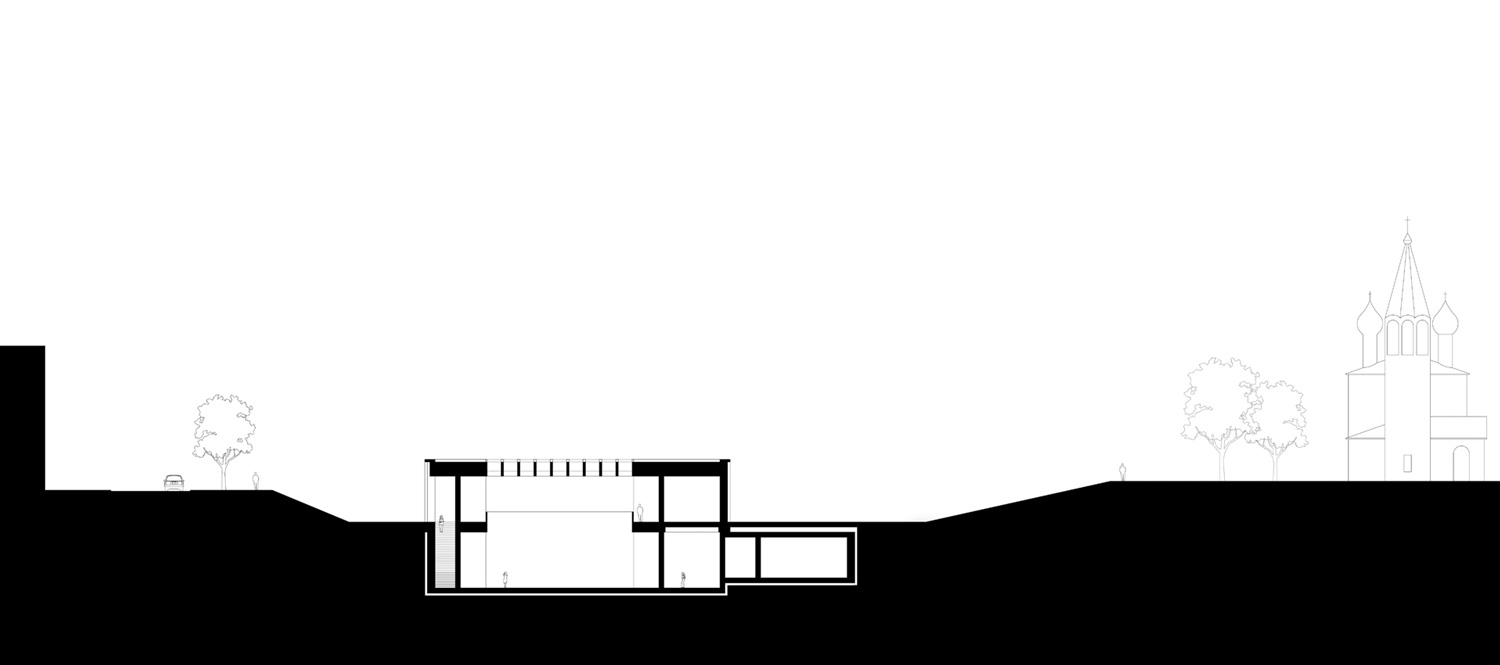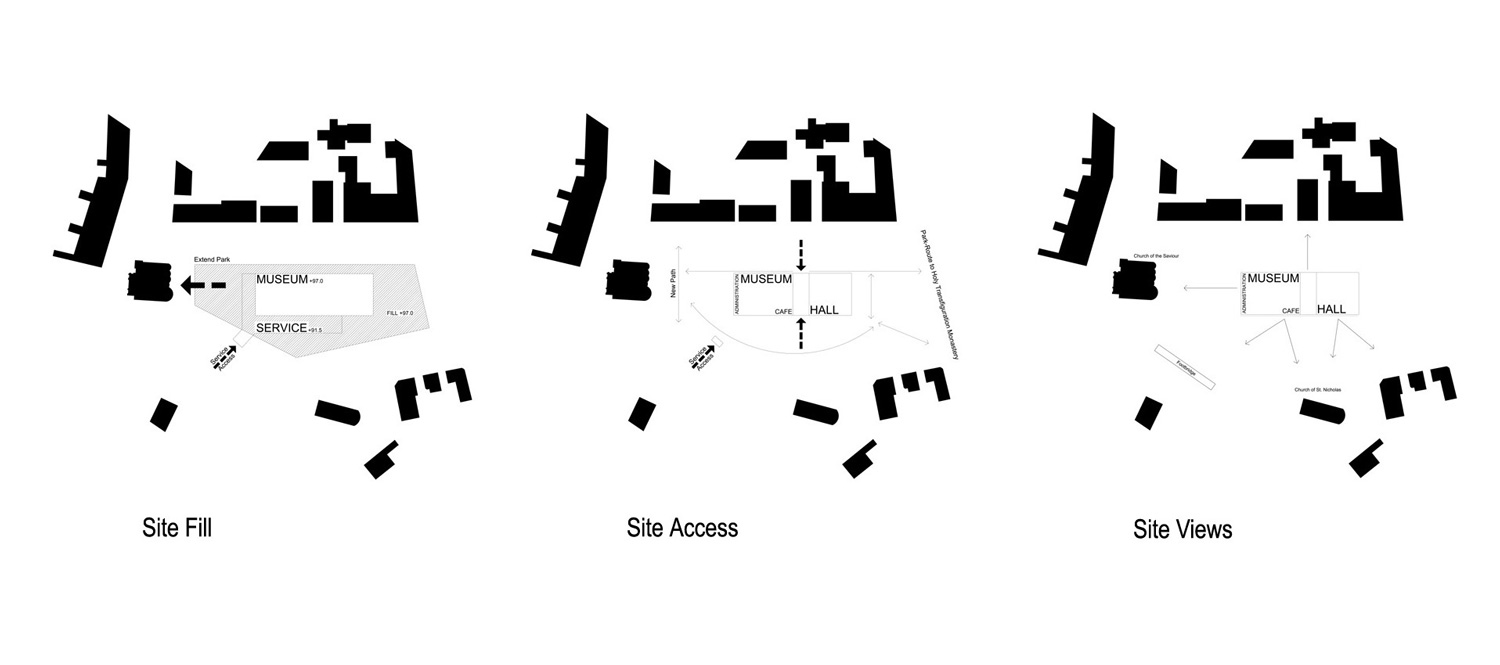1815-AMA-RU-2013
Clients: City of Yaroslavl, UNESCO
Status: Competition (2013)
Location: Yaroslavl, Russia
Coordinates: 57.623515, 39.899828
Climate: Continental, Temperate
Materials: Glass, Metal
Environments: Park, Riverside, Urban
Visualizer: Studio
Scale: 5.888 ㎡ Medium
Types: Cultural, Museum
New museum and festival hall for the historic center of the Russian city of Yaroslavl, a UNESCO World Heritage Site.
Ethereal glass pavilion: on the edge of having a presence, between reflection and a soft light; set within expanded cultural parkland. The building as a lens for filtered light emits a soft glow placing itself confidently, subtly within its surroundings. The outer skin will reflect the sunlight and its’ surroundings, when light is low this outer skin will emit a soft diffuse glow, no other external lighting necessary. Constructional elements are reduced to what is essential, allowing the objects displayed to have their proper presence. At the same time, the glazed skin, the plastered internal walls, exposed concrete beams and ceilings, have their own materiality and tactile qualities; smooth or textured.
In context of the historical quarter of the city, the new museum is a distinct object which is a product of its’ time; defining clearly what is new from what is of the past. Respect for this past is achieved with the creation of a distance from the historical and a distinct quality of the present through the architecture of this time. Historical resonance is seen in the regular footprint of the new museum and its’ positioning in the park, respecting the established urban pattern. This allows the new to sit comfortably next to the old; there is no questioning of lineage. The linear regular geometric form of the new museum is an outcome of a study of the site conditions and pattern of existing development; the new volume sits comfortably within the existing urban fabric.
The site planning develops several ideas resulting from a study of the existing context. The first idea is that of extending the existing parkland, which contains the Church of Saint Nicholas (to the southwest) and the promenade leading to the Monastery of the Holy Transfiguration and the Volga to (the northeast), with the Church of the Savior (to the southwest). This is achieved by eliminating the road dividing the site from the church and extending the parkland connecting these two areas, thereby including this church more naturally within the cultural landscape.
The next idea is to raise the primary elevation of the site to 97m to allow for a better transition from the site to the surroundings and placing a lower level to the new building below this new site elevation. A single story pavilion is placed on top of this lower level, with pedestrian access now possible to and through the site, connecting the aforementioned historical locations and the extended parkland. The new museum is entered from either the street (to the northwest) or the park (to the southeast). Service access (trucks) is created to the new building from the (lower road) to the southeast of the site. Existing views across the site are maintained by keeping the building at the height limit of 103.15m. Functional areas benefiting from southern exposure: the Café, Administrative Offices, and the Festival Hall, are located along the southwest and southeast. The new building respects the street edge establishing itself on the site with careful consideration of the distances to existing structures.
These measures aim to integrate the new museum into the surroundings, to improve the urban condition, pedestrian access and links, and create more green space. Spaces organized on 3 levels. The Ground Floor contains the Entrance Foyer, first Gallery level, the Festival Hall with food service kitchen, Café, related support facilities, and the first level of Administration offices. The First Floor contains additional Administration support facilities. Deliveries and servicing are from the Lower Level, loading dock access from the lower road to the southeast. Museum deliveries, supplies for food service, and Festival Hall delivery access are achieved from this level. Along with Gallery spaces, this level has museum support areas, restoration, archive, storage, etc, along with building services.
The concrete structure sits atop a concrete lower level and is completely wrapped in a layered curtain of energy efficient glass. The layering of the glass provides the only solar/glare shading required, wrapping the building in a homogenous skin. Slight variations in the transparency of the glazing allow for views out at various locations while providing the museum with a differentiated yet uniformed skin. At night this “glass curtain” creates a level of privacy by filtering views from the exterior into the interior space. The Foyer is glazed on both the street side and the park side with clear glass signifying the entrance and allowing views through the space.
